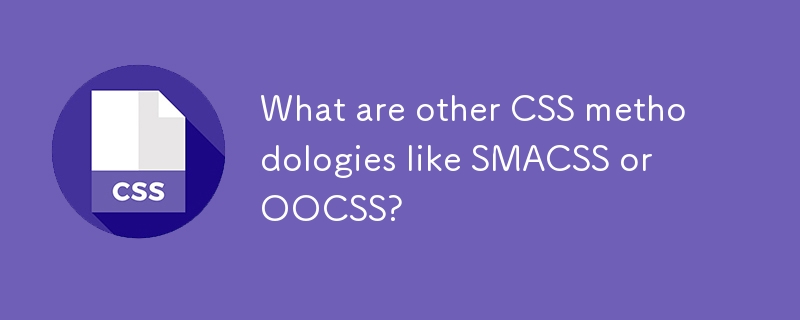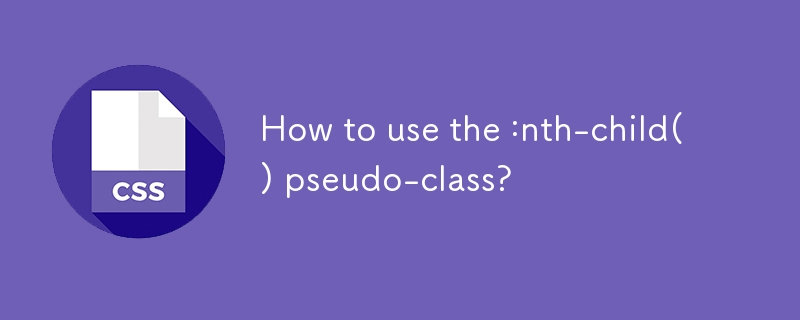Found a total of 10000 related content

How to dynamically add menu items to the layui menu
Article Introduction:Dynamically adding menu items in Layui can be achieved through the following steps: 1. Get menu container; 2. Create menu item elements; 3. Set menu item attributes; 4. Add to menu container; 5. Refresh Layui component. Through these steps, menus can be flexibly generated based on user permissions or business logic to improve the user experience and performance of the application.
2025-05-16
comment 0
581

Brighten Up Your Astro Site with KwesForms and Rive
Article Introduction:This article demonstrates how to integrate KwesForms and Rive to create dynamic, interactive forms within Astro websites. Custom events trigger Rive animations based on form actions, enhancing user experience.
The process involves configuring KwesF
2025-02-08
comment 0
1022

How to dynamically add options to the layui radio box
Article Introduction:Dynamically adding radio box options in Layui can be achieved through the following steps: 1. Get the form element, 2. Create a new option, 3. Insert a new option and re-render with form.render('radio'). Through these steps, forms can be dynamically updated based on user interaction or backend data, improving application flexibility and user experience.
2025-05-16
comment 0
716

What are controlled and uncontrolled components in React forms?
Article Introduction:In a React form, controlled components use React state to manage data, while non-controlled components rely on DOM to process data. 1. The controlled component controls the input value through the state. Each user input will trigger the event update status and can verify or format the data in real time; 2. The uncontrolled component uses ref to obtain the DOM value, which is suitable for obtaining data only when submitting or integrating with third-party libraries; 3. The selection is based on whether the form data needs to be fine-grained and real-time interaction.
2025-07-09
comment 0
706

How to use .native modifier in Vue 2 events?
Article Introduction:In Vue2, .native is a modifier used to listen for native events of the component root element. It is suitable for scenarios where native DOM events need to be directly bound, such as clicking on component containers, processing form input underlying events, or achieving special interactive effects. 1. Native can only be used on custom components, not ordinary HTML tags; 2. If the component has multiple root nodes, .native will be invalid; 3. Not all events are suitable for use with .native, and some interfaces should be exposed through $emit. Alternatives include: listening within the component and throwing events from $emit, batch binding using v-on object syntax, and avoiding multiple nodes to support .native. Although .native is convenient, it is recommended to use $e first.
2025-06-28
comment 0
726

yi framework usage tutorial exchange
Article Introduction:The YI Framework is a PHP framework based on the MVC architecture designed to build fast and scalable web applications. It provides the following features: MVC architecture: Separate the data layer, user interface, and business logic. URL routing: Map the URL to the controller and the operation. Database Operations: Simplify database interaction through ActiveRecord mode. Form processing: Provides form verification and processing support. Extensibility: Can be extended by creating custom modules.
2025-04-18
comment 0
924

How to set default selections in the layui radio box
Article Introduction:Setting the default selection of the radio box in Layui can be achieved through the following steps: Use the checked property of HTML to directly set the default selection. Dynamically set default selections with JavaScript and re-render the form using layui.form.render('radio'). This method not only improves the user experience, but also flexibly sets default values ??based on back-end data, and is suitable for various dynamic scenarios.
2025-05-16
comment 0
384

Creating Custom Validation Rules in Laravel?
Article Introduction:There are four main ways to create custom validation rules in Laravel. First, use Rule objects to add complex conditions, such as combining database queries and ignore methods to achieve unique verification; second, encapsulate custom logic in form requests, and reuse and clear structure by rewriting rules() method; third, use closures to write instant rules, suitable for simple judgment scenarios; fourth, create custom rule classes to make the organization clearer and easier for testing and team collaboration. Developers should choose appropriate verification methods based on specific business scenarios to improve code maintainability and development efficiency.
2025-07-07
comment 0
453

Advanced data validation techniques in Laravel
Article Introduction:Laravel provides a variety of advanced data verification technologies, including encapsulating complex logic using custom rule objects, reusing verification rules using form requests, implementing conditional verification through sometimes methods, and uniqueness checking in combination with database rules. First, create a custom rule class through make:rule and define logic in passes() and message() methods, so complex verification such as age limit can be achieved; second, create a form request class using make:request to separate the verification logic and directly inject it into the controller to improve the code organization structure; third, call the sometimes() method to dynamically decide whether to verify a certain field based on the input value, which is suitable for dynamic forms
2025-07-02
comment 0
163

Vue and Element-UI cascade drop-down box emit usage
Article Introduction:The Element-UI cascading drop-down box realizes parent-child component communication through custom events: the parent component listens to the change event issued by the child component and obtains the selection result. The handleChange method is used to handle selection logic and can perform different operations based on hierarchical differences. In order to obtain intermediate process information, you need to customize events inside the cascading selection box, and one event is triggered at each selection level. For large data sets, it is necessary to optimize the data loading method and use packaging components for complex logic processing. Code readability and maintainability cannot be ignored, and clear naming and annotation can help with post-maintenance.
2025-04-07
comment 0
855

Getting Started With Vue.js
Article Introduction:Quick look at the core concept of Vue.js
Vue.js is a JavaScript library based on the MVVM architecture, used to build user interfaces. It is simpler, easier to learn and flexible than AngularJS. Its core functions include:
Data binding: Supports one-way and two-way data binding, v-model instructions implement bidirectional binding, and model changes are reflected in the view in real time.
Instructions and Filters: Instructions are used to operate the DOM, and filters are used to process data.
Componentization: Create reusable custom HTML elements, improve code readability and maintenance, and use props attributes to pass component attributes.
Note: This tutorial is based on Vue.js 1.x version. Please refer to other resources for Vue 2.x tutorial
2025-02-17
comment 0
728

Extending the Properties of an HTML Element in TypeScript
Article Introduction:TypeScript Tips: Extend HTML Element Properties
This article is excerpted from "Releasing the Power of TypeScript", which will show you how to extend the properties of HTML elements in TypeScript. In large applications, we often build components based on standard HTML elements, such as custom buttons, or components that combine tags and input fields.
TypeScript requires explicit definition of properties accepted by components, which can be cumbersome for each property. To match the properties used by HTML elements in React, you can use React.ComponentProps. To exclude certain properties, you can use the Omit utility type.
To extend the properties of the component, you
2025-02-08
comment 0
497

What are other CSS methodologies like SMACSS or OOCSS?
Article Introduction:CSS methodology is designed to organize styles in a maintainable, scalable way, especially for large projects or team collaboration. BEM avoids conflicts and improves readability through naming conventions of blocks, elements, and modifiers; ITCSS organizes CSS files at common to specific levels, optimizes cascade and specific control; AtomicCSS (such as TailwindCSS) uses practical classes to reduce custom style writing, and speeds up development speed; SUITCSS adopts strict naming specifications, which are suitable for component design and JavaScript integration. Each method has its own advantages and disadvantages, and the choice should be based on project needs and team preferences.
2025-06-26
comment 0
843

How to structure large React applications for maintainability?
Article Introduction:The key to maintaining maintainability in large-scale React projects is clear structure, division of responsibilities and collaborative support, which mainly includes three points: First, organize the file structure according to functions, and centralize components, styles, services and other files based on functional modules to facilitate modification, isolation and reuse; Second, adopt appropriate state management strategies, such as ReduxToolkit or Context useReducer, centrally manage state logic and avoid unnecessary updates; Third, pay attention to component design, follow a single responsibility, control the number of props, extract general logic to custom hooks, and improve encapsulation and reusability.
2025-07-08
comment 0
934

Using Laravel Form Requests for validation and authorization
Article Introduction:FormRequest is a special class in Laravel for handling form verification and permission control, and is implemented by inheriting Illuminate\Foundation\Http\FormRequest. It encapsulates verification rules in rules() method, such as verification rules that define titles and contents, and supports dynamic adjustment rules such as excluding uniqueness checks for the current article ID. Permission control is implemented through the authorize() method, which can determine whether the operation is allowed to be executed based on the user role or the authorization policy (Policy). In addition, FormRequest also supports preprocessing data, custom error prompts and property names, such as prepareForVal
2025-07-13
comment 0
689

When are render functions useful?
Article Introduction:Render functions are useful when fine control over component output is required, especially when template syntax appears to be limited or repeated. They provide more flexible virtual DOM control, suitable for dynamically generating large numbers of similar elements or conditional rendering of deep nested structures; programmable building element trees, simplifying data loops and returning JSX-like structures, and avoiding complex v-if/v-for combinations. In addition, when using stateless components, JSX, or when custom output based on context, if displaying loading/successful content, error messages or layout changes, the Render function can clearly separate the logical paths, improving code simplicity and performance optimization capabilities.
2025-07-14
comment 0
171

Bootstrap: The Key to Responsive Web Design
Article Introduction:Bootstrap is an open source front-end framework developed by Twitter, providing rich CSS and JavaScript components, simplifying the construction of responsive websites. 1) Its grid system is based on a 12-column layout, and the display of elements under different screen sizes is controlled through class names. 2) The component library includes buttons, navigation bars, etc., which are easy to customize and use. 3) The working principle depends on CSS and JavaScript files, and you need to pay attention to handling dependencies and style conflicts. 4) The usage examples show basic and advanced usage, emphasizing the importance of custom functionality. 5) Common errors include grid system calculation errors and style coverage, which require debugging using developer tools. 6) Performance optimization recommendations only introduce necessary components and customize samples using preprocessors
2025-05-08
comment 0
468

How to use the :nth-child() pseudo-class?
Article Introduction::nth-child() pseudo-class is used in CSS to accurately select specific child elements based on element position. Its basic syntax is element:nth-child(n), which can select the nth child element, and supports odd, even and an b formulas, such as 2n 1 or n 3, respectively, to realize odd line selection or custom interval and starting point. For example, tr:nth-child(even) adds background color to even rows of the table. Unlike :nth-of-type(), :nth-child() calculates all child elements, while the former only calculates the same element. Common uses include zebra pattern tables, gallery layouts, navigation menus and form typesettings. When using them, you need to use them flexibly in combination with specific HTML structures.
2025-06-22
comment 0
236

What are HTML5 data attributes (data-*) and how do you access them?
Article Introduction:HTML5's data-* attribute allows developers to store custom data in HTML elements without relying on non-standard attributes or classes. The core usage methods and precautions are as follows: 1. The attribute name begins with data-, followed by lowercase letters and optional hyphens or underscores; 2. It can be accessed through the getAttribute() or dataset attribute, which automatically converts the attribute name to camel name; 3. It is suitable for storing small non-sensitive data, such as ID, UI status or component configuration; 4. Sensitive information or large amounts of data should not be stored; 5. The attribute name must be all lowercase and is accessed in camel form in JavaScript. For example, data-item-price corresponds to itemP in JavaScript
2025-06-22
comment 0
782



















